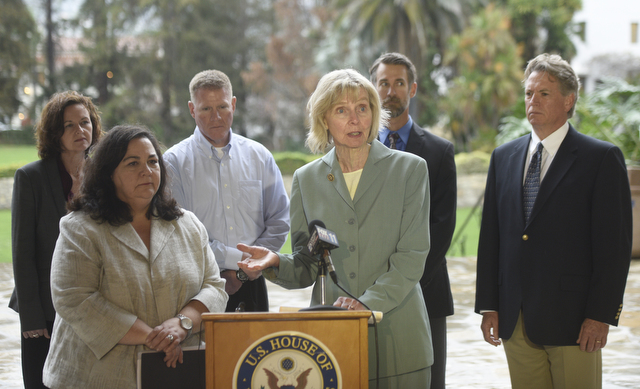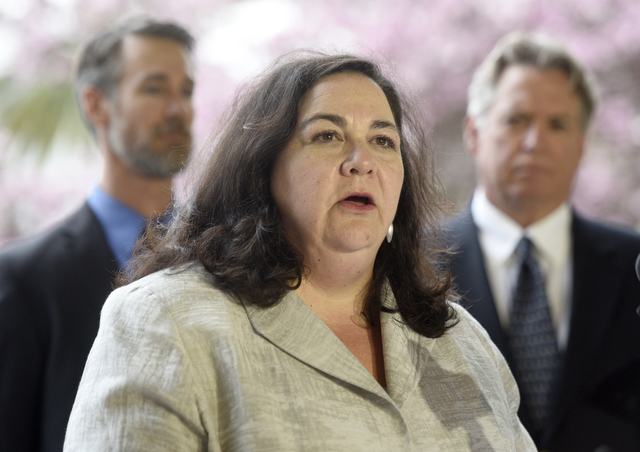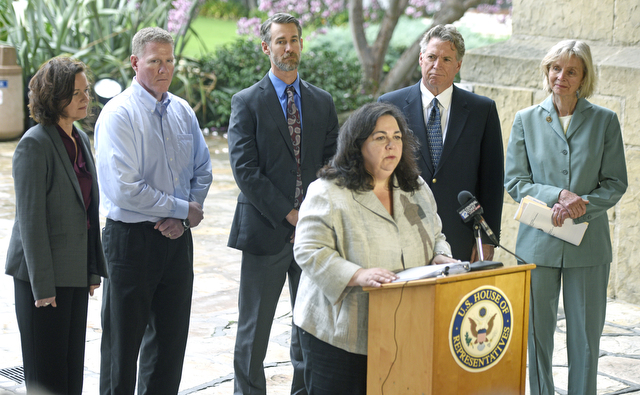PHMSA Releases Detailed Findings on Oil Spill
Corrosion Deemed Root Cause; Lingering Questions for the Road Ahead

A long awaited report on last May’s Refugio Oil Spill unveiled this week by the Pipeline and Hazardous Materials Safety Administration found Plains workers waited 89 minutes to notify the National Response Center (NRC) after discovering the source of an overwhelmingly pungent stench.
The federal agency charged with pipeline regulation, known as PHMSA, believes the oil release began at about 10:55 a.m. on the sunny day last May. At 11:22 a.m., the report found, the pipeline’s leak detection system appeared to shut down. PHMSA blamed the root cause of the spill on external corrosion. In addition, the feds found Plains failed to take precautions necessary to prevent its insulated Line 901 from corroding.
The preliminary yet detailed findings offer a glimpse into what went wrong on May 19, 2015, when an estimated 124,320 gallons of black crude oil spilled near Refugio Road, with an estimated 20,000 gallons reaching the Pacific Ocean.
At the behest of Congressmember Lois Capps, Marie Therese Dominguez, PHMSA’s top administrator, hand delivered the report to Santa Barbara media on Wednesday. Standing beneath the courthouse archway in the misty rain with a number of PHMSA reps, Dominguez, who was hired shortly after the Refugio Oil Spill, spoke in very bland terms. The local media has reported much of her remarks ad nauseam for nine months. Wednesday a TV reporter bluntly asked: Can you tell us something that is new to take back to our newsrooms?
Dominguez said the report “contains the facts we have to date,” but declined to draw conclusions about the “ongoing investigation.” Upon further review, the 12-page report is chock-full of potentially significant details surrounding May 19. The final version, expected in May, could fault its workers or impose hefty penalties.

Timeline
As a practical matter, it is unclear if the 89-minute lag time contributed to a delay in cleanup responders — the U.S. Coast Guard (USGS), the Environmental Protection Agency (EPA), and state agencies, among others. (Onsite county workers made reports of oil on the beach and in the water as early as 12:43 p.m. Fire officials reported Plains’ pipeline as the source of the spilled oil at 2:07 p.m.)
The day of the oil spill, two Plains employees just so happened to be participating in a spill drill with county fire and Office of Emergency Management (OEM) officers at a nearby facility in the 12 o’clock range. They got word of the strong odor at Refugio State Beach, abandoned the drill, and joined firefighters already scouring the area for the source.
PHMSA believes the release started at 10:55 a.m., according to Plains’ Midland-based control room’s SCADA (supervisory control and data acquisition) system. (It is unclear if SCADA alerted the controllers at the time.) Two minutes later, SCADA reported a significant drop in pressure — about 500 pounds per square inch (psig) — at Las Flores Pump Station. But it was not until 11:29 a.m. that the Plains controller issued a stop command to the Las Flores pump; it stopped a minute later.
Notably, at 11:22 a.m., SCADA registered that the pipeline leak monitoring system, which calculates the imbalance between volumetric meters along the pipeline, was turned off. The record is “still being investigated,” the report states.
At the time of the spill, federal law did not specify a time limit for pipeline operators to notify the NRC. In 2013, PHMSA issued an advisory telling operators to contact the NRC within one hour of discovering an incident. In 2011, updates to federal pipeline law directed PHMSA to set time limits for pipeline operators to notify NRC by telephone, but that process had not been finalized by last May.
About a month after the spill, PHMSA proposed a new rule that would require pipeline operators to notify the NRC “at the earliest practical moment following the confirmed discovery of an accident or incident” but “no later than one hour following confirmed discovery.”

Corrosion Deemed Root Cause
PHMSA found a recent inline inspection underestimated Line 901’s corrosion by half. Two weeks before the spill, Plains just happened to have a private contractor conduct a so-called “smart pig” inspection, which found 47 percent of the metal wall had worn away. But when PHMSA’s metallurgical experts extracted and studied physical pipe, they found in fact 86 percent had corroded.
Experts note smart pigs can be inaccurate for a variety of reasons. In fact, the first two miles of Line 901, “was found to be incomplete and not useable for [inline inspection] analysis,” the report stated. Oil companies will often run multiple inspection gauges each time they test pipelines, mandated every five years by federal law. Plains apparently ran only one.
“We’ve been pushing for more inspections,” said Environmental Defense Center (EDC) Chief Counsel Linda Krop, “but if they are using tools that aren’t accurate, [they are not useful].”
A Plains spokesperson declined to comment on the report, citing the ongoing investigation. “…We remain committed to working with PHMSA and other public officials and stakeholders to use the findings and observations…to enhance our procedures and processes…[and] improve practices industry-wide,” she said.
Line 901’s corrosion has seriously worsened in the past eight years, according to PHMSA’s analysis. In 2007, inspection results showed two incidents of corrosion with metal loss greater than 60 percent and 12 occurrences with less than 60 percent. By 2015, the results showed 14 incidents of corrosion with more than 60 percent metal loss and 80 incidents with 60 percent or less; two had greater than 80 percent. (It is worth noting the results from the 2015 smart pig survey were not available to Plains by the date of the spill.) Federal law necessitates immediate action at 80 percent corrosion.
Line 901 had “protection levels that typically are sufficient to protect non-insulated, coated steel pipeline,” the report states. “Line 901 and 903, however, are insulated.” Because the crude oil traveling through it is viscous, the pipeline was heated and the insulation kept the heat. But that insulation also trapped moisture on the exterior of the pipe. It is rare for a pipeline to be insulated, according to county energy staff.
Long Road Ahead
Meanwhile, Plains filed paperwork last week to cancel its tariff with the Federal Energy Regulatory Commission (FERC), as Line 901 — and the 130-mile pipeline connected to it, Line 903 — is currently shut down. (Both have been defunct since the spill. Line 901 was purged of crude; Line 903 is in the process of purging and should be empty within two months.) County planners, political staffers, and observers have scratched their heads for a week about what this could mean. To date, no one knows for sure.
A Plains spokesperson did not return requests for comment about the filings with FERC, which could change its interstate designation (meaning it crosses state boundaries) to intrastate (within the state). Currently, Line 901 terminates in Kern County; it does not actually cross state boundaries. Its interstate designation dates back to its original construction. That minute detail could subject it to tougher in-state regulations, including one drafted by Assemblymember Das Williams and State Senator Hannah-Beth Jackson after the spill.



